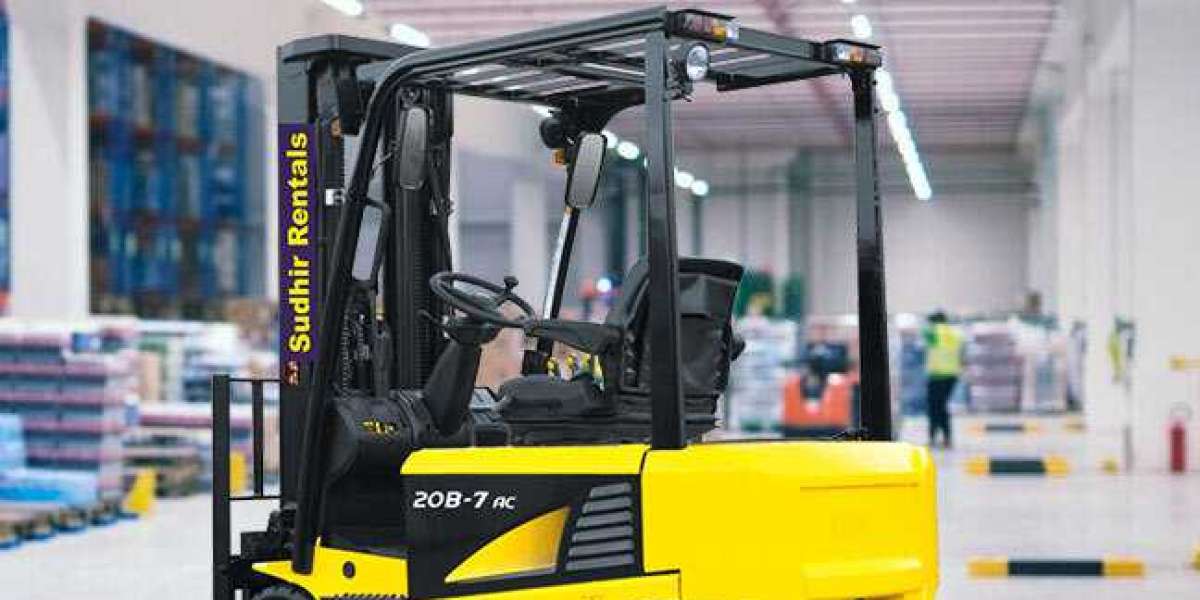Overview of the Australia Forklift Rental Market
The Australia forklift rental market size was valued at USD 148.1 million in 2023 and is projected to grow at a CAGR of 5.5% from 2024 to 2032, reaching approximately USD 240.9 million by 2032. The rental market for forklifts is gaining momentum due to the increasing need for material handling solutions, particularly in industries such as construction, warehousing, and logistics. Renting forklifts offers a cost-effective and flexible solution for businesses needing temporary or project-based equipment without the significant capital investment associated with ownership.
Key Benefits of Forklift Rentals
Forklift rentals provide a range of benefits that make them an attractive option for many businesses:
- Cost Savings: Renting forklifts helps companies avoid the substantial upfront costs associated with purchasing new equipment. It also reduces maintenance and repair expenses since most rental agreements include service support.
- Flexibility: Forklift rental offers flexibility in terms of choosing equipment based on project requirements and adjusting fleet sizes during peak seasons or specific projects.
- Access to Advanced Equipment: Rental services often provide access to the latest models with advanced features, ensuring enhanced productivity and safety.
- Reduced Storage Concerns: Renting forklifts eliminates the need for long-term storage solutions, freeing up valuable space in warehouses and facilities.
Key Industry Developments
- Sustainability and Electric Forklifts: The shift toward electric and eco-friendly forklifts is noticeable, with rental companies expanding their electric forklift fleets to meet environmental regulations and customer preferences for sustainable solutions.
- Technological Advancements: Integration of GPS tracking, telematics, and automated safety features in rental fleets is enhancing operational efficiency and user safety.
- Strategic Partnerships: Rental service providers are partnering with manufacturers to offer better deals and a wider variety of equipment, ensuring customer satisfaction and competitive pricing.
Driving Factors
The Australia forklift rental market is driven by several key factors:
- Growth in Warehousing and Logistics: The expansion of e-commerce and increased demand for storage and distribution services have led to a surge in the need for forklifts. Renting offers an economical solution for companies scaling their operations to meet customer demands.
- Construction Sector Boom: The construction industry is a significant consumer of forklift rental services, using them for material handling at job sites. The continuous development of infrastructure projects across Australia is boosting demand.
- Cost Efficiency: Companies are focusing on reducing capital expenditures and improving cash flow, making forklift rentals an appealing option. Rental agreements often include maintenance, lowering overall costs and operational burdens.
- Seasonal Demand: Industries with fluctuating demands, such as retail during holiday seasons, rely on forklift rentals to manage short-term surges in activity.
COVID-19 Impact
The COVID-19 pandemic impacted the Australia forklift rental market in various ways. Initially, lockdowns and disruptions in the supply chain slowed down industrial and construction activities, causing a dip in demand. However, as e-commerce and logistics sectors surged due to changes in consumer buying behaviour, the demand for forklift rentals rebounded. Post-pandemic, the market has shown resilience with increased investments in warehouse automation and logistics, bolstering the need for forklifts.
Restraining Factors
Despite the positive growth trajectory, the market faces certain challenges:
- Economic Uncertainty: Fluctuations in the economy can affect rental rates and overall demand for material handling equipment. Companies may delay projects or reduce expenditure during periods of economic downturn.
- Availability of Financing for Purchase: Easy access to financing options for purchasing forklifts can deter some businesses from opting for rentals.
- Maintenance Challenges: Although most rental agreements include maintenance, logistical challenges in service delivery can sometimes lead to operational delays.
Market Segmentation
By Type of Forklift:
- Electric Forklifts
- Internal Combustion (IC) Forklifts
- Hybrid Forklifts
By Lifting Capacity:
- Less than 5 Tons
- 5–10 Tons
- More than 10 Tons
By Industry:
- Warehousing and Logistics
- Construction
- Manufacturing
- Retail
- Others
By Rental Duration:
- Short-Term (up to 1 month)
- Mid-Term (1–6 months)
- Long-Term (over 6 months)
Market Outlook
The market outlook for the Australia forklift rental sector is promising, with continued growth expected due to the expansion of logistics, construction, and manufacturing industries. The push for sustainability is likely to increase demand for electric forklifts, which offer quieter operation and lower emissions. Rental companies investing in modern, fuel-efficient, and environmentally friendly equipment are expected to capture a larger market share.
Trends in the Market
- Electrification of Fleets: The adoption of electric forklifts is rising as companies aim to reduce carbon emissions and comply with environmental regulations. Electric models are quieter, cost-efficient over time, and better suited for indoor use.
- Integration of Telematics: Advanced telematics solutions in rental forklifts allow for better fleet management, tracking, and preventive maintenance, leading to improved operational efficiency.
- Automation and Robotics: The growing trend of automation in warehouses is influencing the forklift rental market. Semi-automated and automated forklifts are being incorporated into rental fleets to meet the evolving needs of logistics and e-commerce companies.
- Flexible Rental Terms: Rental services are increasingly offering flexible rental agreements that can be tailored to meet specific business needs, providing further incentives for companies to opt for rentals over purchases.
Industry Segmentation and Regional Analysis/Insights
Regional Insights: Major demand for forklift rentals in Australia is concentrated in regions with strong industrial and logistics hubs, such as New South Wales, Victoria, and Queensland. These states house significant warehousing and distribution operations and see continuous infrastructure development, driving demand for rental services. Growth is also noted in rural and mining areas where temporary equipment needs arise for short-term projects.
Target Audience:
- Construction Companies
- Warehousing and Logistics Providers
- Retail Chains
- Manufacturing Units
- Material Handling Equipment Suppliers
Analysis and Top Impacting Factors
- Sustainability Focus: The move toward eco-friendly solutions is pushing rental companies to adopt electric and hybrid forklifts, aligning with sustainability goals and environmental policies.
- Technological Integration: The use of telematics and data analytics in managing rental fleets ensures reduced downtime and efficient service.
- Economic Considerations: The cost-saving aspect of renting versus owning equipment remains a strong influence on market growth.
Opportunities
- Growing E-commerce Sector: The expansion of e-commerce has led to an increased need for efficient warehousing and logistics solutions. Forklift rentals offer flexible and scalable options to support these operations.
- Shift Toward Electric Models: Companies focusing on sustainability have opportunities to cater to a growing demand for electric forklifts with minimal emissions.
- Expanding Infrastructure Projects: Continued investment in infrastructure across Australia creates a steady demand for material handling solutions, presenting growth opportunities for rental providers.
Challenges
- Rising Operational Costs: Fluctuating fuel prices and maintenance costs can impact profitability for rental companies.
- Competition from Leasing: While rental provides flexibility, leasing options with longer terms can sometimes be more financially attractive for certain businesses.
- Technological Transition: Adapting to new technology, such as automated forklifts, requires significant investment and training, posing challenges for some rental providers.
Scope
The scope for growth in the Australia forklift rental market includes embracing new technologies and meeting the rising demand for environmentally friendly equipment. Companies that offer diversified fleets, including electric and automated options, along with flexible rental terms, will likely lead in this market.
Subcategory: Industrial Automation and Equipment – Material Handling Equipment
Forklift rentals fall under the broader category of material handling equipment within industrial automation. This subcategory focuses on tools and machinery that facilitate the efficient movement, storage, and control of materials throughout manufacturing, warehousing, and distribution processes.
Major Key Players
- United Forklift and Access Solutions
- Adaptalift Group
- Forkforce Australia
- Toyota Material Handling Australia (TMHA)
- Crown Equipment Pty Ltd
- Jungheinrich Australia
- Hyster-Yale Group, Inc.
- Linde Material Handling Pty Ltd
The Australia forklift rental market is set for steady growth, driven by rising demand from the logistics, construction, and warehousing sectors. Challenges such as operational costs and economic fluctuations exist, but opportunities in the adoption of electric and smart forklifts provide promising avenues for growth. Companies that invest in sustainable practices, technology, and customer-focused rental solutions will be well-positioned to capitalise on market trends and expand their presence in this evolving landscape.








